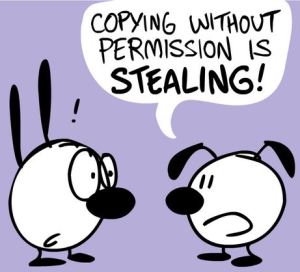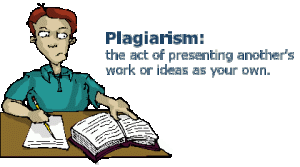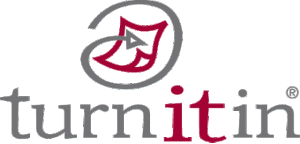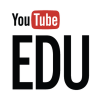Latest Event Updates
PLAGIARISM DETECTION AND PREVENTION
Plagiarism Detection and Prevention
What plagiarism detection software is available to online instructors?
According to Palloff and Pratt most of the online educational institutions offer one form of plagiarism detection software or the other. Walden University for example uses Turnitin and Grammarly as plagiarism detection tools. The two plagiarism detection software (Turnitin and Grammarly) are paid tools. Other universities and colleges in the online learning environment use other types of plagiarism detection software like Plagiarismdetection.org, iThenticate is a free software, Duplichecker is a free software that is easily downloadable from the Internet.
The URL for other available plagiarism detection software for online instructors are:
- Turnitin
http://turnitin.com/static/products/index.php
- Duplichecker
http://www.duplichecker.com/Services.asp
- iThenticate
http://www.ithenticate.com/products/
- Anti-Plagiarism
http://sourceforge.net/projects/antiplagiarismc/
- PaperRater
- Plagiarisma.net
- PlagiarismChecker
http://www.plagiarismchecker.com/help-teachers.php
- Plagium
- Viper
- SeeSources
http://www.plagscan.com/seesources/analyse.php
How can the design of assessments help prevent academic dishonesty?
I think that assessment questions should be designed in such a way to require real-life experiences as responses from the learners. However, not all assessment questions lend themselves to such real-life experience responses. As such, Dr. Pallof suggested that assessment questions should be designed to course goals proficiency in their responses.
I like Dr. Pratt’s suggestion that assessment questions should be designed in such a way that students will need to show a high degree of concept mastery in their responses.
I believe that students’ should be drilled to become well informed about plagiarism detection tools and all assessments submitted via plagiarism and detection tools to avoid academic dishonesty.
Instructors should design timed assessment questions that require students to write essay-type responses to show proficiency in the goals and objectives of the course.

What facilitation strategies do you propose to use as a current or future online instructor?
I agree with Dr. Pratt that students do not necessarily enroll in online courses to cheat, but circumstances may result in situations where they cheat. Whether it is a result of unforeseen circumstances or a deliberate attempt cheating is abhorred in post-secondary education. It is regarded as a contravention of the moral philosophy of scholarship.
As an instructor, I will clearly define and teach academic integrity, I will add the consequences of academic dishonesty as a warning on all assignments including assessments. I believe that proactively creating the awareness of plagiarism is very important from the onset of the course.
I will not overload students with assessments and tasks, and I will design assessments and tasks that require real-life experiential responses aligned to the objectives of the course.
I will give constant, constructive and timely feedback on assignments to guidance throughout the course discussions and assignments to ensure student engagement. I will also encourage students to the free online plagiarism detection software to check their responses before submitted their assignment.
If cheating occurs, I will respond swiftly with disciplinary measures and formal action because students have been informed about the consequences of plagiarism.
Added to these strategies, I will use the non-traditional assessment methods suggested by Dr. Pratt as they have different forms of assessment with well-designed rubrics. In the words of Boettcher and Conrad (2010) the concise rubrics “lay out the criteria for grading and become a useful checklist” (p. 177).
What additional considerations for online teaching should be made to help detect or prevent cheating and plagiarism?
I believe that frequent communication with online learners about the dangers of plagiarism can prevent cheating and plagiarism as Dr. Pallof opined in the Laurette video. As adult learners and instructors, I agree with Dr. Pallof’s suggestion that assessment questions should be designed to solicit real world responses, because such experiences will be transferred to real world situations.
It is also important for instructors to monitor the learner engagement type that students demonstrate in online discussion especially the less engaged and the less visible learners (Ziden, Fook, Idrus, & Ismail, 2009). Another strategy is to assign online learners a short paper on academic dishonesty and plagiarism, because they may be required to use it during plagiarism hearing (Michael & Williams, 2011).
References:
Boettcher, J., Conrad, T., (2010) The Online Teaching Survival Guide: Simple and Practical
Pedagogical Tips. San Francisco; Jossey-Bass
Palloff, R., and Pratt, K. (n.d.) “Plagiarism and Cheating” Video. Laureate, Inc. Retrieved
from Course Video Link
Michael, T. B., & Williams, M. A. (2011). Student equity: Discouraging cheating in
online courses. Administrative Issues:Journal: Education, Practice and Research, 3.
Retrieved from http://dx.doi.org/10.5929/2013.3.2.8
Ziden, A. A., Fook F. S., Idrus, R. M., & Ismail, I. (2009). The types of online interaction model:
Individual approaches in online discussions. Paper presented at the 5th WSEAS/IASME
International Conference on Educational Technology, La Lagune, Spain. Retrieved
IMPACT OF TECHNOLOGY ON ADULT LEARNING

Impact of Technology on Adult Learning
What is the impact of technology on adult learning?
Technology has impacted adult learning in various ways from face-to-face to online learning. Adult learning has been revolutionized by technological innovations from digital tools to digital platforms of course presentations.
It is now possible for adult learners to take online courses in any part of the world as long as they have an Internet access, digital tools to access course information and directions. As a result of technological advances, adult learning programs are virtually in all institutions of learning from secondary schools to post-secondary institutions. Accessibility of online courses is the greatest advantage and benefit of technology on adult learning. Adult learners are also able to collaborate and interact effectively with learners all over the world (Boettcher and Conrad, 2010).
What should online instructors consider before incorporating technology into the online learning environment?
The most important consideration before the introduction of technology into adult learning is the goal and objective of the technology. What is the value added of such technology?
According to Boettcher and Conrad (2010) the introduction of technology into education should aid success with the learning goals and achieve the academic goals of the program. This observation was also made by Conrad and Donaldson (2011).
The cost of the technological tool to be introduced into education needs to be considered and reviewed by the instructor. Prohibitively high-cost technological tools may be beyond the reach of learners and thus become unavailable to learners. Learner comfort level with the technological tool or the technological proficiency of the learners needs to be considered also before the introduction.
What implications do usability and accessibility of technologies have on adult learning?
Usability and accessibility of technologies are a prerequisite for adult online learning. If an adult learner is not able to access or use the recommended technological tool, learning becomes incommodious.
The inability of an adult learner to use or access technology in education is a recipe for an unsuccessful adult learning.
What technologies are most appealing to you for teaching online? Explain?
The technologies that appeal to me are You Tube Education and Litmos in education for online collaboration and interaction.
You Tube Education
YouTube Education is a media tool for education video source for learners. It features a rich resource of content videos, lessons, and materials for professional growth and development. Educators and learners from every part of the globe can exchange educational resources, collaborate on tasks, and interact through video presentations. A significant advantage of You Tube Education apart from the benefits is that it is free.
Litmos
Learning Management System is an application software that can be used to develop courses, deliver courses, track, and manage every aspect of open education.
It is a user-friendly content delivery tool that can track attendance, participation, as well as assignments in an open education learning environment. It helps educators monitor educational progress, assignment submission, time on task, and has collaboration and interaction features among students. According to Litmos, “the best part of Litmos is that it is a hosted training system, which means you don’t need help from the IT department to set it up and get started”. A significant advantage is that the organization purchasing and installing Litmos handles vetting the published materials.
Reference
Boettcher, J.V., & Conrad, R.M. (2010) . The online teaching survival
guide: Simple and practical pedagogical tips. San Francisco: Jossey.
Bonk, C. J. (2009). The world is open: How web technology is revolutionizing education. San
Francisco, CA: Jossey-Bass.
Litmos. http://www.litmos.com/learning-management-systems/
Mortagy, Y., & Boghikian-Whitby, S. (2010). A longitudinal comparative study of student
perceptions in online education. Interdisciplinary Journal of E-Learning and Learning Objects, 6(1), 23-43.
You Tube Education. https://www.youtube.com/education
Internet-Based Multimedia Resources for Online Learning
BLOG POST
Multimedia refers to content that is presented in multiple media like audio, text, animation, video, and graphics. Most of multimedia presentations are created using computers.
- Link(s) to the multimedia resources you chose
- Description of the multimedia resources
- Explanation of what you learned from the multimedia resources
- Explanation of the concerns you have, as an educator, about incorporating the resources into your online learning experience
URL: https://www.youtube.com/education
YouTube EDU is a worldwide digital video learning environment that affords educators and students the opportunity to interact and communicate effectively. It has a rich reservoir of academic lectures and instructional content. It is an excellent source of information for both educators and learners.
YouTube EDU will serve as a content instruction delivery platform as well as a source of additional readings and digital video materials.
I learned about effective collaboration techniques, how to present information in compelling ways, the techniques for synthesizing and analyzing complex content, and the importance of research, planning, and organization skills. There are, however, some challenges to using multimedia in the classroom, including: how to ensure that both the instructor and the learners possess adequate technological skills for using multimedia resources. The cost of acquiring hard and software could be a challenge for some academic organizations.
References
You Tube Education. https://www.youtube.com/education
Richardson, W. (2010). Blogs, wikis, podcasts, and other powerful web tools for classrooms (3rd ed.). Thousand Oaks, CA: Corwin Press.
Setting Up Effective Online Experiences
Blog Assignment: Setting Up Effective Online Experiences
- What steps are most essential for setting up effective online learning experiences for adult learners? Explain why you believe this.
The steps most essential for setting up an effective online learning experience for adult learners are as follows:
Start the course with a relaxing but lively and interesting introduction of each learner in an online class forum. The introduction should be initiated by the instructor informing the learners about his/her qualifications, experiences, personality, and hobbies. The instructor’s introduction should not be a display of arrogance or condescending. The introduction should be motivational, assuring the learners that the instructor has the academic competence to assist them navigate the course. Introduce an ice breaker to get to know your learners and for the learners to know each other. The icebreaker should be creative and imaginative as stated by Conrad and Donaldson (2011). An effective icebreaker according to Conrad and Donaldson (2011) include ensuring that the icebreaker is fun, centered on the individuals in the group, collaborative and interactive.
Encourage the learners to interact and collaborate with each other in problem-solving activities, group tasks, group presentations, and discussion prompts.
The instructor must be present online to moderate the course discussions, give prompt, effective, and non-threatening feedbacks. The instructor should also motivate and encourage learners.
Most importantly, the online course should have a clearly stated course road-map, weekly instructional expectations, weekly resources/materials, and clearly understood grading rubrics (Boettcher & Conrad, 2010).
- Why is it necessary to communicate clear expectations to online learners?
Online programs attract learners from various cities and sometimes different countries of the world. Online learners come to the online environment with different learning styles, personalities, expectations, educational, cultural and social backgrounds. It is therefore imperative that the learning goals, objectives, outcomes, assignments, and overall expectations of the course be communicated clearly without ambiguities to the learners.
- What additional considerations should the instructor take into account when setting up an online learning experience, especially one that targets adult learning?
‘Life happens’ is a phrase used to describe unforeseen circumstances. One important additional consideration to be made by instructors includes, make-up assignments/tests for learners in the event of unanticipated happenstances.
The instructor should provide learners with a list of the program online support sites, program support personnel, and the email forum for instructor-learner and learner-learner communication.
References
Boettcher, J. V., & Conrad, R. (2010). The online teaching survival guide: Simple and practical
pedagogical tips. San Francisco, CA: Jossey-Bass.
Harrington, C. (2013). Instructor’s resource manual for student success in college: Doing what works! A research-focused approach. Boston, MA: Wadsworth, Cengage Learning.
Blog Assignment: Online Learning Communities
What are the essential elements of online community building?
There are three essential elements of building online community according to Dr. Keith Pratt and Dr. Rena Pallof. These are the three P’s: People, Purpose, and Process.
- People
People could be a community of students and their facilitator; a community of people within an age group, gender, race, religion, or philosophical beliefs; and or a mix of the two communities. In each of these communities people come together because they have a common goal. That gives credence to the second essential: purpose.
- Purpose
People who make up a community share a common goal which is the purpose of the community. One can ask a question such as, why do people form communities? People form communities because they share common desires, needs, or goals. They believe that through interaction, collaboration, and communication they can fulfil their desires, needs, or goals. The next question is how do they achieve the goal? This question leads to the third essential in community building, which is the process.
- Process
I will define process as the set of guiding principles that lead to the achievement or fulfillment of the community’s goals or desired outcomes.
Conclusion
People with similar goals, needs, or desires come together within an online environment to fulfill their desires, needs, or goals.
How do online learning communities significantly impact the learner’s learning and satisfaction with online education?
In the online learning environment (community), there are factors that influence or impact the learner’s leaning.
- Interaction of the learner with the course content
- Interaction of learner with instructor
- Interaction of the learner with other learners
Course content interaction
The learner has to be equipped with the basic knowledge of online learning to be successful. The course content should be well designed and understood by the learner. Online learning administrators should ensure an unambiguous and appropriate design of course content. Course content delivery system should be user friendly, effective, accessible via different technological devices, unambiguous, and with links to other sources of vital and relevant information. The course content delivery methodology should also be adaptable to changes in technological advancement.
Learner-Instructor interaction
Learners and instructors should be able to foster a cordial but professional interaction where the instructor is available to assist learners with their issues. Instructors should be quick to give non-threatening and professionally sound feedbacks to learners. Instructors should explain the institution’s grading policies to learners using appropriate course delivery methods.
Learner-Learner interactions
Learners should be able to interact appropriately with one another in the learning environment on course projects, group activities, and whenever the need arises.
How can online learning communities be sustained?
Online learning communities can be sustained when all the factors that influence or impact the learner’s leaning community are functioning effectively. That is the interaction of the learner with the course content, interaction of learner with instructor, and interaction of the learner with other learners are effective, functional, and successful. Other conditions include explicitly stating the goals of the program and using dynamic digital tools to access, respond, communicate, and interact in the program.
What is the relationship between community building and effective online instruction?
Effective online instruction is an important component that assures sound online community building. If the online instruction is effective which presupposes that learner-course content interaction, learner-instructor interaction, and learner-learner interaction are effective, then a strong online learning community is built. A disruption in the proper functioning of any of these factors, invariably impacts online learning community negatively.
References
Boettcher, J. V., & Conrad, R. (2010). The online teaching survival guide: Simple and practical
pedagogical tips. San Francisco, CA: Jossey-Bass.
Laureate Education, Inc. (Executive Producer). (2012). Online learning communities. Baltimore,
MD: Author.
DIGITAL CITIZENSHIP, ETHICS, AND NETIQUETTE
DIGITAL CITIZENSHIP, ETHICS, AND NETIQUETTE
Two Technologies Related to Digital Citizenship
Students fail to understand the dangers of posting materials online. As adult educators, it is our responsibility to inform our students and their parents about digital security (Roblyer & Doering, 2010). In completing this activity, I chose two websites: i-Safe and iKeepSafe as the digital tools to teach digital security.
- URL is http://www.isafe.org
i-Safe is a website and a leader in Internet security education designed to educate digital citizens about the safe and responsible use of the Internet. According to the website, the goal of i-Safe is to teach students and other digital natives how to avert irresponsible, misguided, and deplorable online behavior. i-Safe designs curriculum for primary and secondary schools within and outside the country to ensure that their mission is achieved. i-Safe also reaches out to community leaders, law enforcement, and parents to assure holistic understanding of the evils of violating netiquette. Since this website is designed to educate both students and adults about the responsible use of the Internet. It is my first choice of two technologies related to digital citizenship, ethics, and netiquette that have the capability to improve adult learning.
I can incorporate i-Safe website materials into my curriculum and spend about 20 minutes each day to view the video clips of how to be a responsible digital citizen and role models for other Internet users.
I can also play i-Safe games with my students and reward them for correct responses to questions. I will use ten index cards with questions about appropriate and responsible use of the Internet on one side and the answer to the questions on the reverse side. The quiz can be completed in 5 to 10 minutes daily.
- URL is http://www.ikeepsafe.org/
The second website of choice to use in educating my students is iKeepSafe. The goal of iKeepSafe is to ensure that children, students, and adults and other digital natives are aware of and avoid the dangers of inappropriate use of the Internet. In order to achieve this goal, iKeepSafe uses programs such as iKeepCurrent Newsfeed to inform digital citizens of engaging activities and information on cyber security. Digital literacy is another program that iKeepSafe uses to educate cyber citizens about the proper use of the Internet. Generation Safe is the third program used as a component of iKeepSafe to incorporate digital literacy into the curriculum. The objective is to offer digital citizens engaging information on cyber security. I chose iKeepSafe because it is a holistic approach to educate students, parents, primary and secondary school teachers. It also provides training and professional development opportunities for college educators, adult educators, local organizations, companies, and community leaders on the responsible use of the Internet.
I can easily incorporate iKeepSafe into my curriculum by using iKeepSafe programs like iKeepCurrent, Digital Literacy, and Generation Safe to educate my students. I will use 20-minute video clips and PowerPoint presentations to teach my students about the dangers and unlawful use of the Internet.
I can also assign the ten commandments of Internet use to my students and ask them to design posters about digital security. The created posters will be reviewed regularly.
Conclusion
I believe that the two websites that I chose for this activity are significant. According to Roblyer and Doering (2010) the best way to educate of digital citizens, is to work with parents, teachers, and the community. This comprehensive approach ensures that every digital citizen understands the dangers of inappropriate and unlawful use of the Internet (Bradley, 2009). A holistic strategy that brings educators, students, parents, and leaders within a community to learn about digital security is the best way to go
References
Bradley, S. (2009). The impact of netiquette on online group work: a study of UK Open
University students. In: Kallioinen, O., (Ed.). Learning by developing—New ways to learn 2009 conference proceedings, 152-167. Used by permission of Maarit Franti, Vice President of Laurea University of Applied Sciences.
iKeepSafe. Retrieved from http://www.ikeepsafe.org/communities/faith-based-organizations/
i-Safe. Retrieved from http://www.isafe.org
Roblyer, M. D., & Doering, A. H. (2010). Netiquette: Rules of behavior on the Internet.
Retrieved from http://www.education.com/reference/article/netiquette-rules-behavior-internet/





